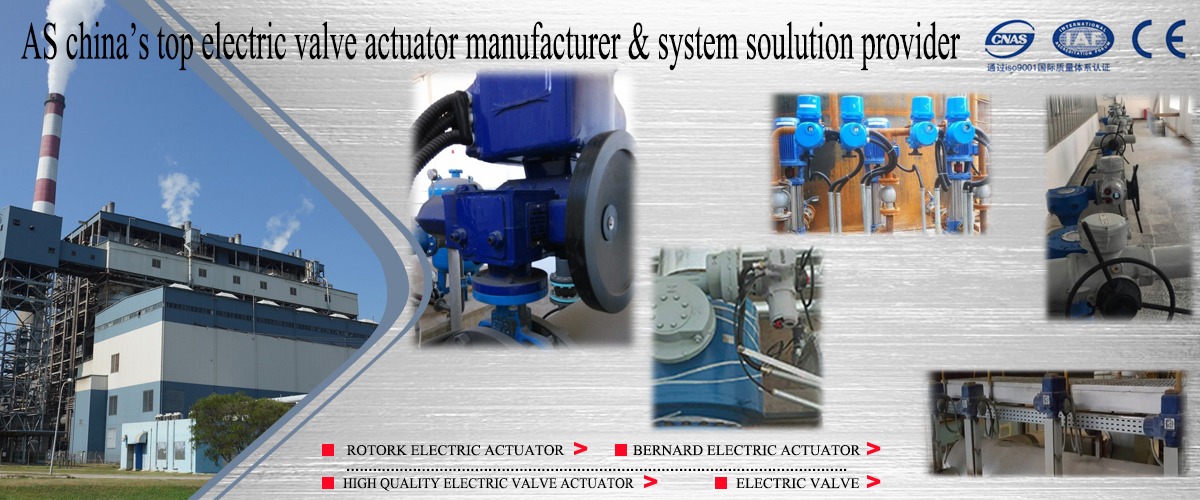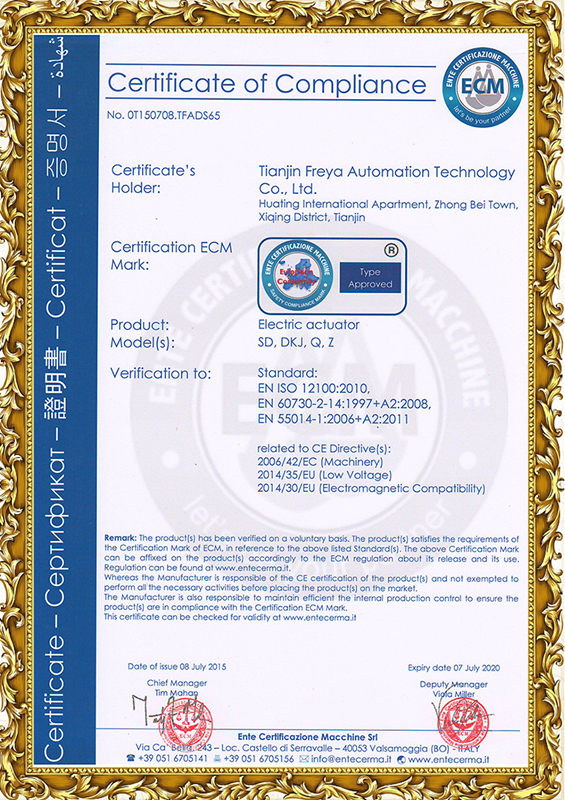TECHNICAL SUPPORT
Selection Principle of Electric Actuator
The selection principle of valve electric actuator is as follows:
1. There are two main machine structures for operating thrust valve electric device: one is not equipped with thrust disc and directly output torque;The other is provided with a thrust disc, the output torque is converted to output thrust by the stem nut of the thrust disc.
2. Operating torque: the operating torque is the most important parameter for selecting the valve electric device, and the output torque of the electric actuator should be 1.2 ~ 1.5 times of the maximum operating torque of the valve.
3.Type of electric actuator
(1). Angle travel electric actuator (Angle <360 degrees)
Electric actuator output shaft rotation less than a week, that is, less than 360 degrees, usually 90 degrees to achieve the valve opening and closing process control.This kind of electric actuator can be divided into direct connection type and base crank type according to the different way of mounting interface.
A) direct connection type: it refers to the form in which the output shaft of the electric actuator is directly connected to the valve stem.
B) base crank type: refers to the form in which the output shaft is connected to the valve stem through the crank.
This kind of electric actuator is suitable for butterfly valve, ball valve, plug valve, etc.
(2).Multi-turn electric actuator (turn Angle >360)
The rotation of the output shaft of the electric actuator is more than one week, that is, more than 360 degrees. Generally, multiple turns are required to realize the opening and closing process control of the valve.
This kind of electric actuator is suitable for gate valve, globe valve, etc.
(3).Straight stroke (linear motion)
The motion of the output shaft of the electric actuator is linear.
This kind of electric actuator is suitable for single seat regulator, double seat regulator, etc.
4. Output shaft rotation circle count: the number of laps valve electric actuator output shaft rotation with nominal diameter of the valve, the valve stem thread pitch, thread, according to M = H/ZS calculation (M for electric devices should satisfy the total number of rotating ring, H is height of valve opens, S for stem drive screw pitch, Z for the stem thread).
5. Stem diameter to multi-turn type stem valve, if the maximum stem diameter allowed by the electric device cannot pass through the valve stem, it cannot be assembled into an electric valve.Therefore, the inside diameter of the hollow output shaft of the electric device must be larger than the outside diameter of the stem of the stem valve.For the non-rising stem valves in partial rotary valves and multi-rotary valves, the diameter of the stem should not be considered, but the diameter of the stem and the size of the keyway should also be taken into full consideration when selecting the valve, so that the assembly can work normally.
6. Output speed: if the opening and closing speed of the valve is too fast, water hammer will easily occur.Therefore, the appropriate opening and closing speed should be selected according to different operating conditions.
Valve actuators have special requirements that limit torque or axial forces.Usually the valve electric device USES the limit torque coupling.When the specification of the electric device is determined, its control torque is also determined.Generally in the predetermined time operation, the motor will not overload.








